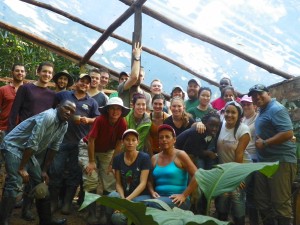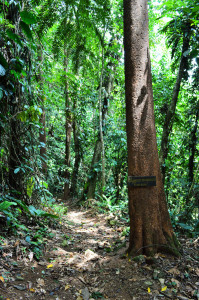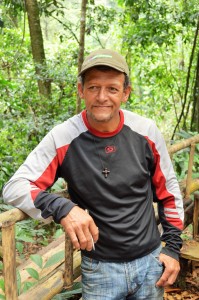Preserving the bridge of life
Deep in the rainforest of the rural community of Las Lomas, Costa Rica, lies a treasure hidden in plain sight: La Cuna de Aves (“The Cradle of Birds” in Spanish). La Cuna de Aves is a nature reserve that makes up a small but crucial part of the Barbilla Biological Corridor, a “bridge of life” and passageway that animals like the jaguar use to travel from Mexico all the way to the Amazon. Most of the community’s residents have never visited– and many who do enter the dense forest only do so to hunt, fish or cut down trees, all of which are illegal activities.
A number of conservation groups, NGO’s and community leaders have been working in the area to mitigate these harmful practices, and in 2011 EARTH’s Community Development Program (CDP) began collaborating with the reserve as part of the Community Experience Module for second-year students. In just three years, the students, volunteers and CDP have worked together to make La Cuna de Aves an eco-tourism destination, generating much-needed income for the community’s residents and awareness for the reserve, which now offers nature walks, waterfall tours, luncheons and educational trips for tourists and community members alike.
Every Wednesday morning, two EARTH students hike down the steep trail to an airy, rustic shelter next to a waterfall, where local dairy farmer and wildlife expert Rodrigo Ureña awaits their arrival. Rodrigo is one of the reserve’s most dedicated volunteers and has worked closely with the CDP, stating that, “EARTH has been a very important resource for us, and a huge support on many different fronts: providing training, working side by side with us, bringing tourist groups and just in general getting the word out to people that the reserve even exists.”
The place where students and Rodrigo spend much of their mornings is called Soda El Jaguar (in Costa Rica small, neighborhood restaurants are known as sodas), completed in January of 2014. The effort was coordinated by the CDP and the International Academic Relations office at EARTH, which invited visiting engineering students from Colorado State University to design and build an economical and environmentally-friendly building.
Rodrigo explains that the minimalist design of the small restaurant and attached seating area was intentional, saying “All we needed was a space to cook, eat, enjoy nature and stay dry. We didn’t want to disturb or transform the place in any way.”
Luis Carazo, who has worked with the CDP for more than eight years, explains that the key to success in the communities like Las Lomas is to be ready and willing to help, but only when called upon. “I always say that we don’t have projects in communities like Las Lomas, what we have are relationships with people. We wait for them to tell us exactly what they want to learn and do with us. It has to be completely their own decisions for the program to work. These decisions are made in real conditions by real people who have their own priorities and problems in their lives.”

Community members, EARTH students, CDP staff and study abroad students form the University of Colorado worked together to build the Soda El Jaguar.
For Rodrigo, the completion of the restaurant has been yet another milestone in his personal journey as a conservationist, which began just seven years ago. Before that, he openly admits to frequently poaching in the very place he now protects. “I didn’t know then what I know now,” he laments, but goes on to say, “Today, I dedicate my time to doing just the opposite, I’m trying to preserve this place for future generations, because who can hold up this bridge of life if not us?”
With much work left to be done, Rodrigo is unfailingly optimistic about the future of the reserve. “My goal is that this place can be a space that the community loves, that people realize they need to protect it, because it is part of all of us. That is my dream: that one day, children and their parents will realize that La Cuna de Aves is one of the biggest national treasures we have.”







¡Felicitaciones desde Perú! ¡Qué gran trabajo y qué importantes son los trabajos comunitarios en las universidades!
hola porfavor qusiera saber sobre las carreras que ahi